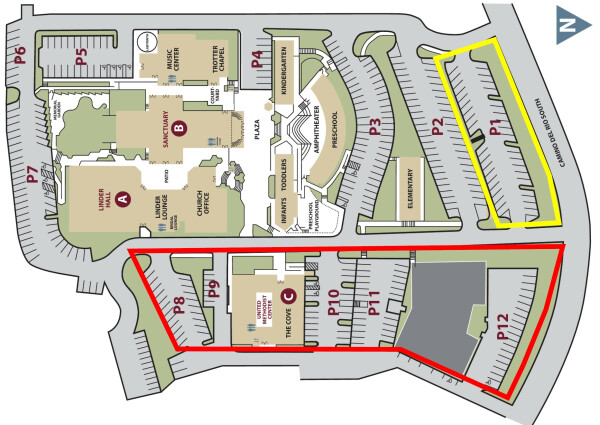Affordable Housing Initiative
Updates from the FUMCSD Property Transition Team
We’ve been on a multi-year journey of discovery of how we can best use the property under the care for First UMC of San Diego. This has led us to explore the dream of providing affordable housing to our neighbors!
It’s an initiative led by a multi-disciplinary team of church members and volunteers, with assistance from staff. Be sure to check back often for updates.
In June, we invited the church family to participate in shaping the direction for Mission Valley East. Through a series of meetings, we've captured questions and feedback to ensure the resulting property recommendations fit with the vision of the church. Thank you to everyone who shared thoughtful, insightful ideas! The team is now using all the information to fine-tune the vision.
Unable to join or want to share more? Use the form on this page to send your questions and feedback.
Back in 2023, our church family came together to determine how we can become the church for this time and place while creating a sustainable operating budget and revenue sources. If you need a refresher – you can download and read all the task force group recommendations.
A major takeaway from this important work was discovering how we can best use the properties that are under our care. Through the recommendations of the Building Usage Task Force, we created a Property Transition Team that was tasked with managing the sale of the Ocean Beach parsonage, researching the feasibility of transitioning the Ocean Beach sanctuary complex into affordable housing, and researching the feasibility of transitioning our Mission Valley East parcel (property that is to the east of the church office).
An overview of the vision and process was shared in an All Church Gathering on June 1:
Here are answers to common questions we’ve received about our Affordable Housing Initiative. You can also download the questions posed during our June 2025 All Church Gathering.
Instead of selling property, we are seeking a long-term ground lease arrangement. A ground lease developer/their funding consortium will pay FUMCSD for the use of our land:
Our team is looking at the entire parcel east of the access road and sanctuary, which includes P8, P9, The United Methodist Center/Cove, P10, P11, the building currently occupied by Here Comes the Bride, and P12. P1 is also up for consideration. The project could include portions of one or both of the sections outlined in the below image.

Residential housing is allowable on our property.
When working with a developer, we can request that our project focus on a particular group and income level. For example: Extremely Low-Income Families, with income at 30% of Average Median Income, might look like an annual income of $50,000 for a family of four.
Defining our vision of our “ideal” neighbor is one of the items that is currently in progress. To do so, we’re asking:
We conducted a financial feasibility study with LeSar Development Consultants to determine if an affordable housing project would make sense. They used a hypothetical large family project of 140 units when conducting their analysis. However, the total number of units will be dependent upon our final vision for desired neighbors and which portions of property we decide to set aside for the ground lease.
The housing units would be for rent and that process would be managed by a property manager, completely independent of the church.
Using a ground lease, the developer is responsible for setting up ongoing management and maintenance of the property, including providing supportive services to residents.
As a congregation and the owner of the property, we will have recourse if the developer/property manager violates the ground lease agreement.
There may be some initial investment of church funds, mostly in legal work to get a ground-lease agreement into place. But the main responsibility to find funding for the project falls on the developer. This often requires time to conduct due diligence and put together the stack of funding from private, government, and philanthropic sources before work begins (can be up to several years).
When it comes to staff time and human resources, there will be times when staff and volunteers are heavily involved, such as negotiating a ground agreement, or coordinating construction. There will also be times when we are waiting for approvals or developer research, etc.
Once the project is built, how we interact with and build community with our neighbors is up to the congregation to determine.
Part of the proposed land for development currently serves as parking lots. However, as our church grows, we will continually reassess parking capacity and options for repurposing unused space.
Projects with over 20% affordable housing or in a Transit Priority Area (we fall into both criteria), have no minimum parking requirement. However, we can request in our RFP that developers submitting proposals include a plan for parking, which could include shared parking with the church.
If we invest the revenues from a one-time, capitalized ground lease payment in a similar way that we steward Foundation funds, a conservative 5% draw on those funds for operating expenses would more than compensate for the loss of current tenant revenue.
The Property Transition Team (PTT) has been charged by the Church Council to explore affordable housing options and create a proposal to be approved, denied, or amended by the Church Council. Here is a brief overview of the steps involved:
An overview of how our property is currently being used and an article about parking density:
A look at other affordable housing projects, income limits, and what we would like offered for our new neighbors:
Potential demographics and income limits and how we can be in relationship with our new neighbors:
Key findings including rent trends, as compiled by California Housing Partnership:
Outline of potential parcels being explored for ground lease – this has not been finalized and can be partitioned: